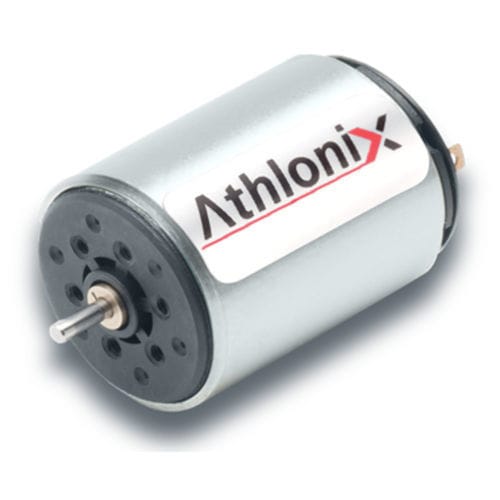
#Product Trends
Coreless Brush DC Motors for Blood Clot Removal
Harnessing Coreless Brush DC Motors for Efficient Blood Clot Removal
Cardiovascular devices perform the lifesaving task of clearing arteries of plaque – even maintaining life during surgery – by assisting the heart in pumping blood throughout the body. An essential component of these devices is high-speed miniature motors, which power the drive mechanism. Reliability and performance are key characteristics required of the motion solution; this is understandable, given the critical nature of cardiovascular treatment devices. With the wide array of motor technologies available, it is essential to select the one best suited for the requirement of each device. In this series, we will review the three primary cardiovascular applications – peripheral artery disease treatment devices, thrombolysis treatment devices, and mechanical circulatory support devices – and the ideal motor technology for each.
Read Part 1: High Speed BLDC Motors and Atherectomy Devices
Part 2 - Thrombolysis Treatment Devices: Harnessing Coreless Brush DC Motors for Efficient Blood Clot Removal
Proper blood flow is essential for good health, so when that blood flow is slowed or blocked by a blood clot, it’s not only hazardous – it’s potentially fatal. The clot must be removed quickly to restore proper blood flow in the patient; this is usually completed through thrombolysis treatment, a common yet vital procedure used to dissolve blood clots. In this blog post, we will explore what thrombolysis is, discuss thrombolysis treatment devices, delve into their functioning, and highlight the role of miniature motors, specifically coreless brush DC motors, in these devices.
What is Thrombolysis?
As mentioned above, thrombolysis is a medical technique employed to dissolve blood clots so that blood flow can be restored to blocked or narrowed blood vessels. This procedure is commonly used in the treatment of conditions such as acute ischemic stroke, deep vein thrombosis (DVT), and pulmonary embolism.
In this approach, thrombectomy devices utilize different motion approaches to remove the blood clot, with mechanical devices fragmenting and extracting the thrombus.
Thrombolysis Treatment Devices and Coreless Brush DC Motors
Thrombolysis treatment devices are specialized tools designed to break up the thrombus. These devices ensure targeted treatment and minimize the potential side effects of systemic administration. Miniature motors play a crucial role in the functioning of these devices. Among the various types of motors used, coreless brush DC motors, with their ironless rotor design, have gained popularity due to a few unique characteristics:
Compact Size. Coreless brush DC motors are small and compact, making them ideal for integration into miniature medical devices. Their compact size allows for easy maneuverability within the catheter, enabling precise drug delivery to the targeted location.
High Power-to-Weight Ratio. Despite their small size, coreless brush DC motors exhibit excellent power-to-weight ratios. This feature allows the thrombolysis treatment devices to deliver the necessary force required for efficient clot dissolution.
Smooth Operation. Coreless brush DC motors operate with minimal vibration and low noise levels, ensuring the smooth and reliable functioning of the thrombolysis treatment devices. This characteristic is essential to maintain precision and reduce patient discomfort during the procedure.
Efficiency and Control. These motors provide high torque output and precise speed control, enabling accurate drug delivery within the blood vessels. The precise control offered by coreless brush DC motors enhances the safety and efficacy of the thrombolysis procedure.
Benefits of Using Coreless Brush DC Motors in Thrombectomy Devices
The design of the thrombectomy device drives the selection of the motor diameter, defining the maximum torque required from the motor. The Athlonix 22mm and 24mm coreless DC motors provide the speed capability and quick response time that result in successful treatment for the patient. The coreless design lowers the weight of the motor, providing an ergonomic advantage for the overall device design. Coil customization leads to the optimum torque and speed output, while mechanical customizations for the shaft and mounting provide a secure fit in the device. All these motor features help to eliminate patient complications.
Conclusion
Thrombolysis treatment devices are critical tools used in the treatment of blood clots, ensuring targeted delivery of clot-dissolving medication. The incorporation of miniature motors, particularly coreless brush DC motors, enhances the efficiency, precision, and control of these devices. Are you designing the next iteration of your thrombectomy device? Reach out to Portescap’s engineers to discuss the optimum Athlonix DC Coreless motor for your application.





